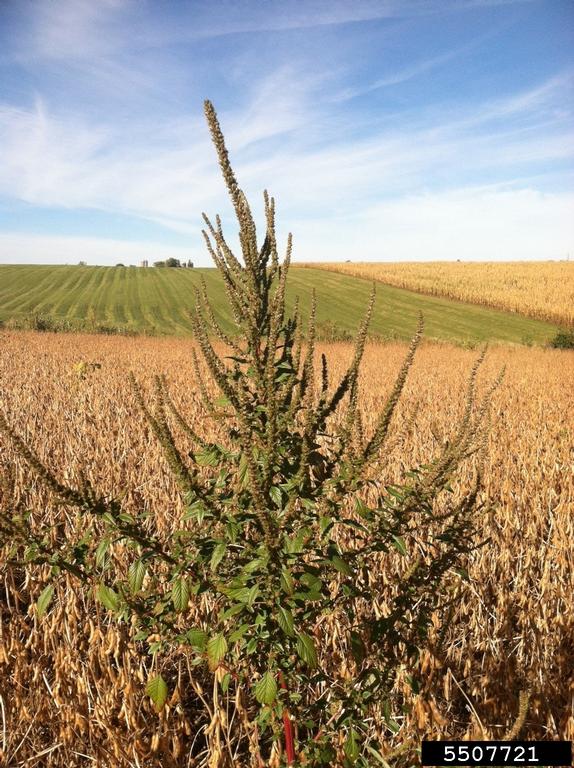Weed of the Month: Palmer Amaranth
 | Author:
Allison Kosto, MSU Broadwater County Extension Agent
MSU Broadwater County Extension Agent |
Weed of the Month: Palmer Amaranth
Allison Kosto, MSU Broadwater County Extension Agent
Although a native plant to parts of the United States, palmar amaranth has proven itself to be one of the most devastating cropland weeds in the U.S. It has not been found in Montana yet but has been seen dangerously close to its borders. It’s an important weed to be aware of and watch for so that its spread can be contained quickly.
Description & Habitat
Palmer amaranth is native to the desert regions of the southwest U.S. and northern Mexico. It was accidentally transported to the southeastern U.S. where it is now a serious weed in cotton and other crops. It has continued to spread north and is a major issue in corn and soybeans in the Midwest. It has even been found in the upper Midwest in conservation plantings where native seed mixes were contaminated with seed. It has been found in several of our neighbors including Wyoming and North Dakota, not far from the Montana border.
Palmer amaranth is a summer annual (life cycle of one year). It has separate male and female plants, and commonly reaches heights of 6 to 8 feet. Leaves are smooth and oval to diamond-shaped. Some, but not all, plants have a white v mark on the leaves. There is a small, sharp spine at the tip of each leaf on female plants. Seed heads are also sharp and prickly to the touch. Palmar amaranth looks very similar to redroot pigweed and grows in similar habitats such as fields, roadsides, etc. The easiest way to tell them apart is that redroot pigweed has hairs on its stems and leaf surfaces, while palmer amaranth is smooth.
This plant is a concern for many reasons. It is highly adaptable. It has a long germination window, rapid growth rate, high water use efficiency and produces a large quantity of seed. In fact, one plant is capable of producing up to 1 million seeds. It’s a major cropland weed and can reduce yield up to 91% in corn and 79% in soybeans. Perhaps worst of all, it is resistant to multiple herbicides. A study at Purdue University, found plants that survived applications of 20 lbs. of active ingredient per acre of glyphosate (i.e. Roundup) which is equivalent to 7 gallons per acre.
Management
In Montana, our primary objective is to quickly identify this plant so it can be removed. It is imperative that this plant be stopped quickly so that it does not become an issue in our state. This weed spreads to new areas through contaminated seed, hay and forage and farm equipment, especially custom combines.
Ideally, purchase hay that is certified weed seed free. Every state has a program to certify hay in the field. If you are not feeding certified hay, then feed the hay in a dry lot or contained area so that you can monitor potential weed issues for several years. Wash any new equipment before it comes onto your property especially if it is coming from another state. If you utilize custom farmers, insist that they do the same before they work in your field.
If palmar amaranth is found its control options are limited due to multiple herbicide resistance issues, and it requires an integrated pest management system for control. A few methods include crop rotation, deep tillage and hand weeding. Commonly used chemicals include Prowl, Pursuit, Roundup, Valor and Weedmaster. It’s important to rotate herbicides to prevent resistance to other herbicide groups. Always read and follow the entire label when applying herbicide. Common chemical names are used for clarity but does not imply endorsement of a product or brand.
For assistance on weed identification and management, contact the MSU Extension Office in Broadwater County at 406-266-9242.
Article Images
Click on Image Thumbnail(s) to view fullsize image
PhotoCredit: Allison Kosto
